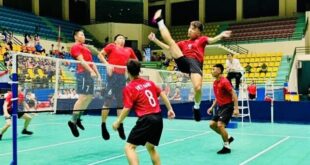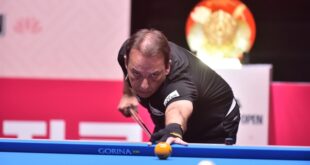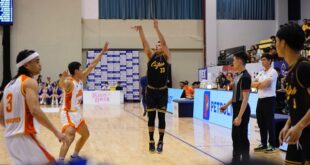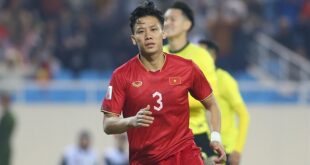In a country obsessed with beauty pageants, basketball and boxing, the Philippines women’s team hope to ignite interest in football when they make the nation’s World Cup debut this week.
Long minnows in the sport, the Philippines have never played at a FIFA World Cup, either the men’s or women’s.
All that will change on Friday when the women’s side under their Australian coach Alen Stajcic play Switzerland in Dunedin, New Zealand.
Stajcic calls their journey from “almost ground zero” to the World Cup “miraculous.”
Half of his players do not belong to a professional club and some have been “running around the block on their own” for training, he said.
“It’s been a meteoric sort of rise for the team,” the 49-year-old told AFP via Zoom prior to the World Cup.
“The challenge for us is to somehow maintain and sustain that improvement, not be happy with where we got to.”
Since Stajcic’s appointment as coach in late 2021, the Philippines have jumped from 68 in the FIFA rankings and are now a best-ever 46th place.
It began with the Women’s Asian Cup in early 2022 when they made the semi-finals, losing to South Korea but securing a historic World Cup berth.
They followed it up with bronze at the Southeast Asian Games last year, then won the regional AFF Women’s Championship on home soil.
‘We don’t have fields’
The Philippines are in Group A at the World Cup alongside co-hosts New Zealand, Norway and Switzerland.
They will not be expected to get out of the group, but defender Hali Long said: “I would like to think we’re going to go in there and do more than just participate.
“We’re going in there to compete with everything we have to show.”
The team hope getting the Philippines to their first World Cup can be a game-changer for football in the country.
Long was born in the United States – most of the players on the national team have been recruited from the Philippines’ large diaspora.
“It’s not the most popular sport here,” Long told AFP at a practice session for her club in Manila in the lead-up to the World Cup.
“It’s not the beauty pageants, boxing and basketball; we don’t have a ‘B’.”
Goalkeeper Inna Palacios, one of the few players born in the Philippines, said more investment was needed to find and develop young talent in the poverty-plagued country.
“We don’t have the fields or a place to play,” said Palacios.
“It was tagged as a… sport for people who are rich and can afford fields and shoes, but in reality you just need your feet and a ball.”
Playing catch-up
Stajcic is a major reason for the Philippines’ improvement.
He brings a wealth of experience in a playing and coaching career in Australia.
He coached Australia at the 2015 World Cup and took the Matildas to as high as fourth in the FIFA rankings, but was dumped despite guiding them to the 2019 tournament.
Stajcic says that being able to get the squad together for extended periods, including a 10-week training camp in the United States before the Asian Cup, has been another reason for their dramatic upturn.
But he will need all his nous and know-how if the Philippines are to be competitive in a women’s game which is at an all-time high in Europe and North America.
“Women’s football in the last five years has gone through exponential growth,” said Stajcic.
“The rest of the world is already a hundred steps ahead of us.”
Despite that he is backing his team to make an impact if they “do everything right”.
“We’re going to need a little bit of luck,” Stajcic said.
“We’re going to have to make our luck, we’re going to have to give ourselves every possible chance in our preparation.”
- Reduce Hair Loss with PURA D’OR Gold Label Shampoo
- Castor Oil Has Made a “Huge” Difference With Hair and Brow Growth
- Excessive hair loss in men: Signs of illness that cannot be subjective
- Dịch Vụ SEO Website ở Los Angeles, CA: đưa trang web doanh nghiệp bạn lên top Google
- Nails Salon Sierra Madre
 VnExpress News The News Gateway of Vietnam
VnExpress News The News Gateway of Vietnam





